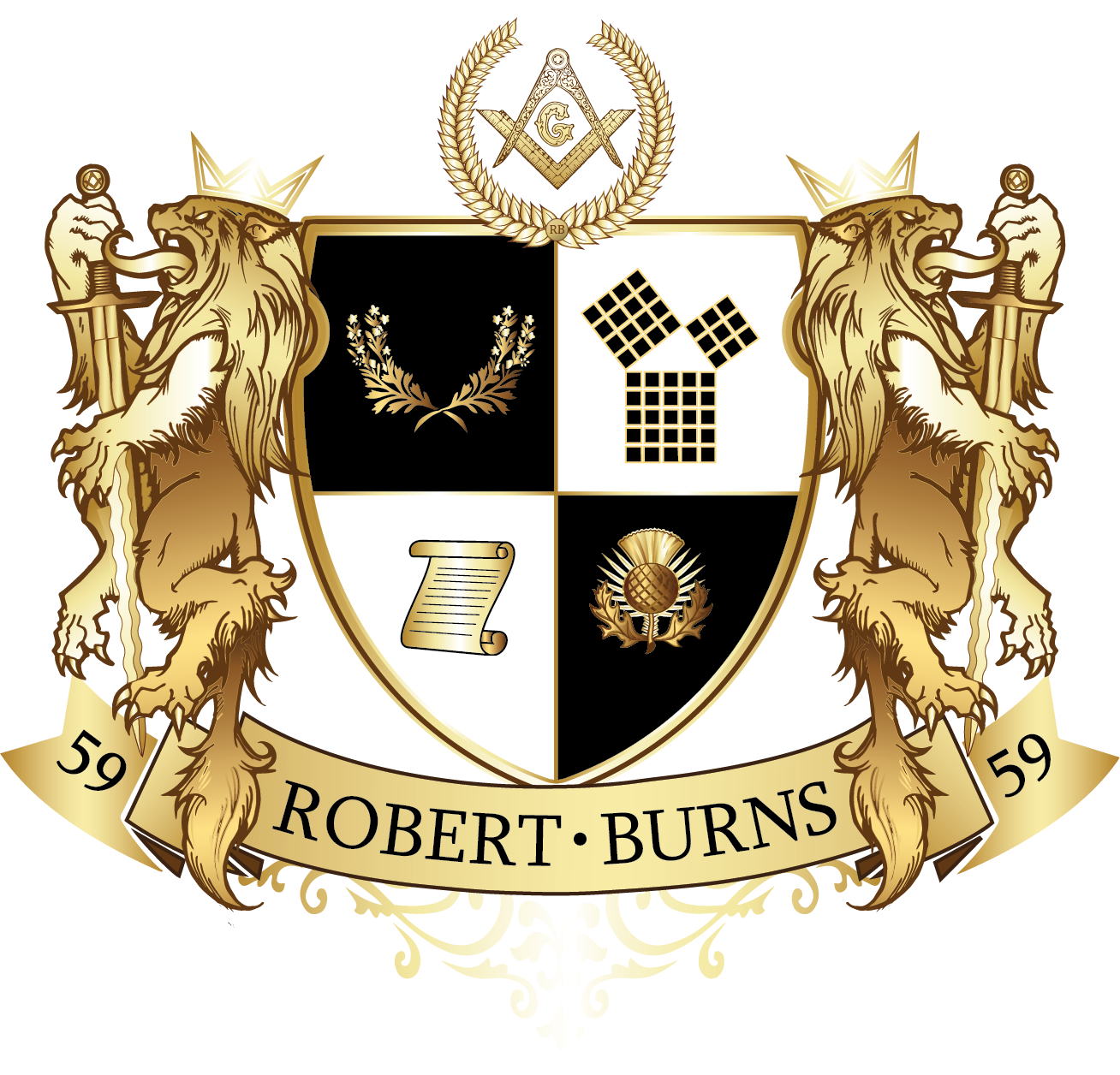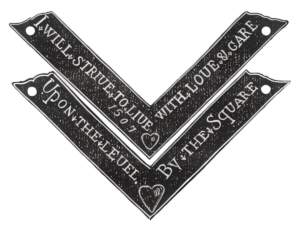THE BAAL'S BRIDGE SQUARE

1507
One of the earliest known Speculative Masonic Artifact
A Testament to the Enduring Legacy of Irish Freemasonry
Introduction:
The Baal’s Bridge Square, an enigmatic brass artifact bearing the date 1507, has captivated the minds of Masonic scholars, historians, and enthusiasts since its discovery in 1830. Found during the reconstruction of Baal’s Bridge in Limerick, Ireland, this small yet significant square has become a focal point for those seeking to unravel the mysteries of early Freemasonry. Its inscriptions, symbolism, and the historical context surrounding its creation and placement within the bridge’s foundation have sparked numerous debates and theories, shedding light on the Craft’s development and the enduring influence of Masonic principles. This comprehensive research paper, meticulously prepared by the brethren of Robert Burns Lodge Number 59, aims to provide an in-depth exploration of the Baal’s Bridge Square, its historical significance, and its place within the broader context of Irish Freemasonry.
Discovery and Historical Background:
The story of the Baal’s Bridge Square begins in November 1830, when Brother James Pain, a renowned architect and engineer, was tasked with overseeing the reconstruction of the old Baal’s Bridge in Limerick. As t he demolition of the existing structure commenced, Pain made a remarkable discovery in the eastern corner of the northern land pier’s foundation – a small brass square, measuring approximately 5 7/8 inches (149 mm) from tip to tip. The square, bearing the inscription “I WILL STRIVE TO LIVE WITH LOVE & CARE UPON THE LEVEL BY THE SQUARE” and the date 1507, was deeply embedded within the stonework, suggesting a deliberate placement during the bridge’s original construction.
he demolition of the existing structure commenced, Pain made a remarkable discovery in the eastern corner of the northern land pier’s foundation – a small brass square, measuring approximately 5 7/8 inches (149 mm) from tip to tip. The square, bearing the inscription “I WILL STRIVE TO LIVE WITH LOVE & CARE UPON THE LEVEL BY THE SQUARE” and the date 1507, was deeply embedded within the stonework, suggesting a deliberate placement during the bridge’s original construction.
The exact date of the old bridge’s construction remains a mystery, as no records have been found to pinpoint the year it was built. However, historical documents from 1558, during the reign of Queen Elizabeth I, mention the existence of a bridge at this location, referred to as the “Tide-bridge.” Throughout its history, the bridge has been known by various names, including “Bald Bridge,” “Boyle’s Bridge,” and “Ball’s Bridge,” before finally being named Baal’s Bridge following the discovery of the square in 1830.
The location of the Baal’s Bridge Square within the foundation of the bridge holds significant Masonic implications. The placement of the square in the north-east corner aligns with the Masonic tradition of laying a ceremonial foundation stone in that specific position during the construction of a building.
This custom, still observed by Freemasons today, suggests that the square was not merely lost or discarded during the bridge’s construction but was intentionally placed as a symbolic gesture, reflecting the importance of Masonic principles and traditions.
Inscription and Symbolic Interpretation:
Central to the intrigue surrounding the Baal’s Bridge Square is the inscription etched upon its surface. Despite the passage of centuries and the corrosion of the metal, the words remain clearly legible:
“I WILL STRIVE TO LIVE WITH LOVE & CARE UPON THE LEVEL BY THE SQUARE.”
This phrase, rich in Masonic symbolism, encapsulates the moral and ethical principles that form the foundation of the Craft.
The inscription’s emphasis on living “upon the level” and “by the square” reflects the Masonic ideals of equality, integrity, and uprightness. In Masonic symbolism, the square represents morality, truthfulness, and the pursuit of a virtuous life. As a tool used to ensure perfect right angles and test the accuracy of horizontal surfaces, the square serves as a powerful emblem of the Craft’s commitment to moral rectitude and the building of strong, upright character.
The presence of a heart on each side of the square’s outer angle further underscores the importance of love, compassion, and care within Masonic teachings. The heart, a universal symbol of love and devotion, reinforces the notion that Freemasonry is not merely a fraternal organization but a way of life guided by the principles of brotherly love, relief, and truth. The Baal’s Bridge Square’s inscription and symbolism challenge the prevailing notion that speculative Freemasonry, with its emphasis on philosophical and esoteric teachings, emerged only in the 17th or 18th centuries. The square’s date of 1507 suggests that the symbolic interpretation of Masonic tools and the application of moral principles were already well-established in Ireland by the early 16th century.
This discovery has led scholars to reconsider the timeline of Masonic development and to explore the possibility that the Craft’s speculative traditions may have deeper roots than previously thought.
Historical Context and Irish Freemasonry:
To fully appreciate the significance of the Baal’s Bridge Square, it is essential to consider the broader historical context and the development of Freemasonry in Ireland. While the exact origins of Irish Freemasonry remain obscure, evidence suggests that the Craft has been present on the island for several centuries.
The earliest documented reference to Freemasonry in Ireland dates back to 1688, when a letter written by John Pennell, a member of Trinity College in Dublin, mentioned a “Fraternity of Freemasons” in the city.
However, the discovery of the Baal’s Bridge Square, with its date of 1507, indicates that Masonic traditions and symbolism were already being practiced in Ireland nearly two centuries before Pennell’s letter.
Throughout the 18th and 19th centuries, Irish Freemasonry experienced significant growth and development. The Grand Lodge of Ireland, established in 1725, played a crucial role in organizing and regulating the Craft throughout the country. Many prominent figures in Irish history, including political leaders, intellectuals, and artists, were active members of the Masonic fraternity.
The Antient Union Lodge No. 13, the custodians of the Baal’s Bridge Square, exemplify the rich heritage of Irish Freemasonry. Warranted in 1732, this “time immemorial” lodge predates the formation of the Grand Lodge of Ireland and has been instrumental in preserving Masonic history and traditions in Limerick and beyond.
The discovery of the Baal’s Bridge Square in 1830 coincided with a period of significant social and political change in Ireland. The 19th century saw the rise of Irish nationalism, the struggle for Catholic emancipation, and the devastating impact of the Great Famine. Despite these challenges, Freemasonry continued to thrive in Ireland, providing a forum for men of diverse backgrounds to come together in a spirit of brotherhood and mutual support.
Ongoing Research and Preservation Efforts:
Since its discovery, the Baal’s Bridge Square has been the subject of extensive research and analysis by Masonic scholars and historians. Efforts have been made to unravel the mysteries surrounding its creation, the identity of the Masons involved in its placement, and its significance within the broader context of Irish Freemasonry.
One area of ongoing research focuses on the possible connections between the Baal’s Bridge Square and other early Masonic artifacts and documents. Scholars have sought to compare the square’s inscription and symbolism with those found in ancient Masonic manuscripts, such as the Regius Poem (c. 1390) and the Cooke Manuscript (c. 1450). These comparative studies aim to shed light on the evolution of Masonic symbolism and the transmission of Masonic knowledge across time and geographical boundaries.
In addition to scholarly research, the Antient Union Lodge No. 13 has taken great care to ensure the preservation and protection of the Baal’s Bridge Square. The lodge has implemented strict conservation measures to safeguard the artifact from further deterioration and has made efforts to raise public awareness about its historical and cultural significance.
The creation of replica squares in 2002, to commemorate the 160th anniversary of the Provincial Grand Lodge of North Munster’s founding, has also played a vital role in preserving the legacy of the Baal’s Bridge Square. These replicas, meticulously crafted in silver and accompanied by certificates of provenance, have allowed Masonic enthusiasts worldwide to forge a tangible connection with this ancient artifact and to appreciate its enduring symbolism.
Conclusion:
The Baal’s Bridge Square, with its enigmatic inscription, early date, and profound symbolic significance, stands as a testament to the enduring legacy of Irish Freemasonry. Its discovery in 1830 has provided a rare glimpse into the Craft’s early history, challenging prevailing notions about the development of speculative Masonry and the evolution of Masonic symbolism.
The square’s inscription, urging the reader to live with love, care, and adherence to the principles of the level and the square, encapsulates the moral and ethical foundations of Freemasonry. Its presence in an early 16th-century bridge suggests that these principles were already deeply ingrained in Irish Masonic traditions long before the establishment of the first Grand Lodge.
As research into the Baal’s Bridge Square continues, new insights and theories will undoubtedly emerge, shedding further light on the complexities and mysteries of early Freemasonry. The ongoing efforts to preserve this remarkable artifact and to share its story with the wider public demonstrate the commitment of Irish Freemasons to safeguarding their rich heritage and ensuring that the lessons embodied by the square continue to inspire and guide future generations.
In conclusion, the Baal’s Bridge Square remains a powerful symbol of the enduring spirit of Freemasonry, its commitment to moral and ethical principles, and its ability to transcend the boundaries of time and place. As we reflect on the square’s fascinating history and the profound impact it has had on our understanding of the Craft, we are reminded of the importance of preserving and cherishing the tangible and intangible heritage of Freemasonry for generations to come.
Sources:
1. Berry, H. F. (1905). The Marencourt Cup and Ancient Square. Dublin: Royal Society of Antiquaries of Ireland.
2. Crossle, Philip. (1929). The Baal’s Bridge Square. The Builder Magazine.
3. Furnell, Michael. (1842). A Drawing of the Baal’s Bridge Square. Freemasons’ Quarterly Review.
4. Lepper, John Heron, & Crossle, Philip. (1925). History of the Grand Lodge of Free and Accepted Masons of Ireland, Vol. 1. Dublin: Lodge of Research, CC.
5. McGregor, Robert. (2002). The Baal’s Bridge Square: A Masonic Relic of 1507. Freemasonry Today, 21, 25-26.
6. Pain, James. (1830). Personal correspondence regarding the discovery of the Baal’s Bridge Square. Antient Union Lodge No. 13 Archives, Limerick, Ireland.
7. Scanlan, Matthew D. (2003). Freemasonry in Limerick: The Baal’s Bridge Square. The Old Limerick Journal, 39, 25-30.
8. Tatsch, J. Hugo. (1930). Some New Facts About The Baal’s Bridge Square. The Builder Magazine, XVI.
9. The Baal’s Bridge Square. (1905). Ars Quatuor Coronatorum.
10. The Freemasons’ Quarterly Magazine and Review. (1850). The Baal’s Bridge Square, 320.
11. The Grand Lodge of Ireland. (2021). History of Irish Freemasonry.
12. The Provincial Grand Lodge of North Munster. (2002). The Baal’s Bridge Square Replica Project. Limerick, Ireland.
13. Westropp, Thomas Johnson. (1899). Notes on the Antiquities of Limerick. Journal of the Royal Society of Antiquaries of Ireland.
Piece of Architecture by Robert Burns Lodge Number 59,
Masonic Lodge Located in Las Vegas, Nevada.
Grand Lodge of F∴& A∴M∴ of Nevada.
